If You Can Master These 3 Bodyweight Movements After 60, You’re Stronger Than Most
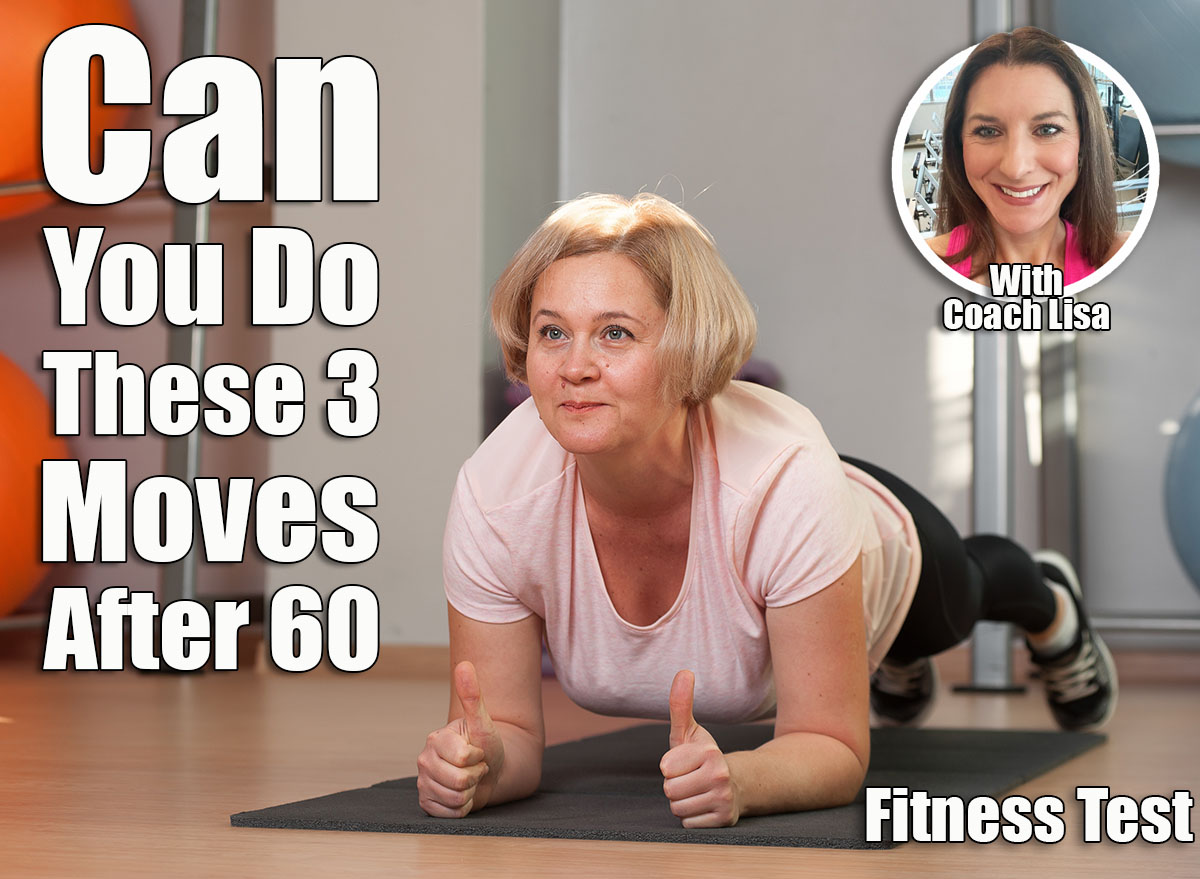
Stepping out of a chair without using your hands for support might seem simple, but it’s actually a powerful indicator of strength and independence as we age. After spending over 25 years in the fitness industry, with the majority of my one-on-one clients over 60, I’ve seen firsthand how certain bodyweight movements separate those who are thriving from those who are struggling. As a fully certified STOTT PILATES® Instructor and personal trainer, I’ve developed a keen eye for what truly matters when it comes to functional strength. Today, I’m sharing the three essential movements that prove you’re stronger than most of your peers—and why mastering them could be key to aging well.
The Strength Challenges You Face After 60
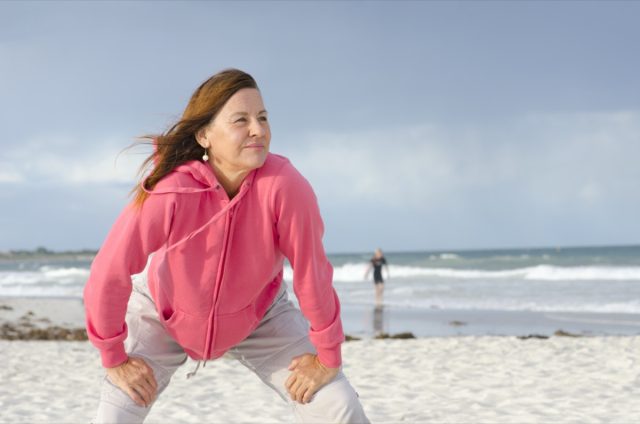
As a fitness professional, I have noticed that strength challenges tend to shift in people over the age of 60. Some of these challenges include being able to perform everyday tasks, loss in muscle mass (sarcopenia), balance & stability, mobility & flexibility, as well as decreased speed and power.
Bodyweight movements are particularly effective for building strength after 60 because they are low-impact, which is great for aging joints. Bodyweight exercises mirror what people tend to do in everyday tasks. They are also great for improving balance and stability.
3 Bodyweight Moves That Prove Your Strength After 60
Squats
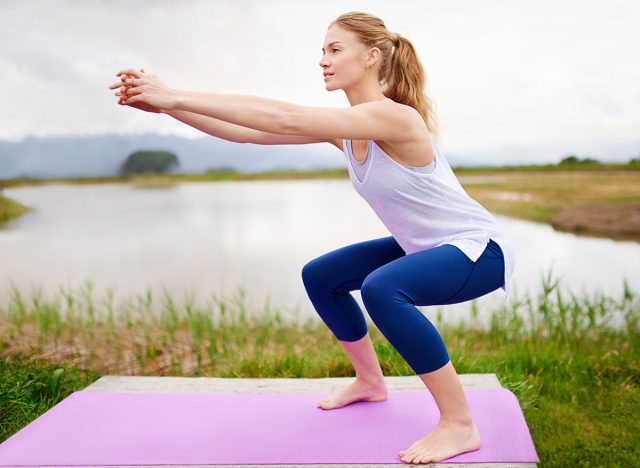
How it proves strength at this age: Squats use body weight and mimic sitting down into a chair and getting out of a chair. Squats are a functional movement that we perform every time we sit on a chair or the toilet. If you can get in and out of a chair or up and down from the toilet without using your hands, you have great strength over 60.
How to do it:
- Stand with feet hip distance apart
- Reach arms forward to counterbalance as the weight shifts back
- Flex the hips and knees
- Stick butt out
- Keep core engaged
- Return to standing, bringing arms by the side
- Complete 10-15 repetitions
Target that indicates “stronger than most”: Start with completing 10-15 reps. If you can successfully complete more than 30 reps in 60 seconds without breaking form, you are in excellent shape.
Common mistakes to avoid: People tend to flex the knees before the hips, which creates more pressure in the knees. That doesn’t make it easier, just harder on the knee joints. Some clients complain about it hurting their back. Keep the core engaged and spine neutral.
Planks
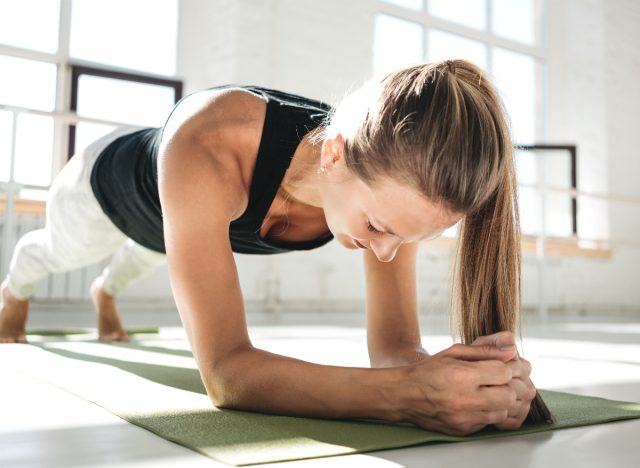
How it proves strength at this age: Planks are a great exercise to strengthen the core. Not only does it use the abdominal muscles isometrically, but it also challenges scapula stability and lower body alignment. You also have to perform planks on the floor. If you can get down and back up off the floor without assistance, you are strong over 60.
How to do it:
- Start on hands and knees
- Step feet back to extend the hips and knees
- Keep your hands under your shoulders
- Maintain a neutral spine
- Keep abdominals engaged
- Send energy to the heels
- Hold for 30-90 seconds
Target hold time that indicates “stronger than most”: Start with mastering 30-second planks. If you can hold a plank for 60 seconds or more, you are stronger than most.
Common mistakes to avoid: People will tend to poke their hips up to decrease the lever length, or they will sink into their spine, creating more tension on the spine.
Crawling
How it proves strength at this age: Crawling is very rudimentary. We learn to crawl as babies, and it is actually very beneficial as we age. It creates a cross pattern which stimulates proprioception, integrates cognitive function, and works the vestibular system. Most people don’t get down on the floor. If they fall, they can’t get up. Crawling is one of my favorite exercises to have my aging population perform.
How to do it:
- Get on your hands and knees on the floor
- Begin to crawl forward, ensuring that you are using your opposite hand and knee
- Take 4 to 6 crawls forward
- Then take 4-6 crawls in reverse
Target that indicates “stronger than most”: How fast can you crawl without losing form? If you are able to get down and back up from the floor, then you are stronger than most.
Common mistakes to avoid: Moving one hand first, then the opposite knee; not crawling with the opposite hand and knee simultaneously.
How You Compare to Your Peers
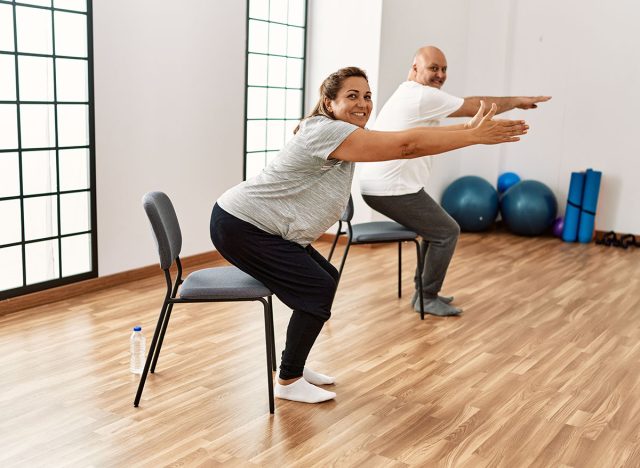
I have been in the fitness industry for 25 years. The majority of my one-on-one clients are over the age of 60. I have all of my aging clients perform these exercises. Most people that don’t exercise regularly won’t be able to perform these exercises with proper form. Let alone, they probably won’t be able to get down on the floor and back up again without assistance. What happens if they fall and can’t get up off the floor? Remember those commercials? It’s true. If you can’t get up on your own, you are not going to age well.
Looking for more easy ways to lose fat? Here’s How Long Your Walking Workout Should Be To Shrink Belly Fat.